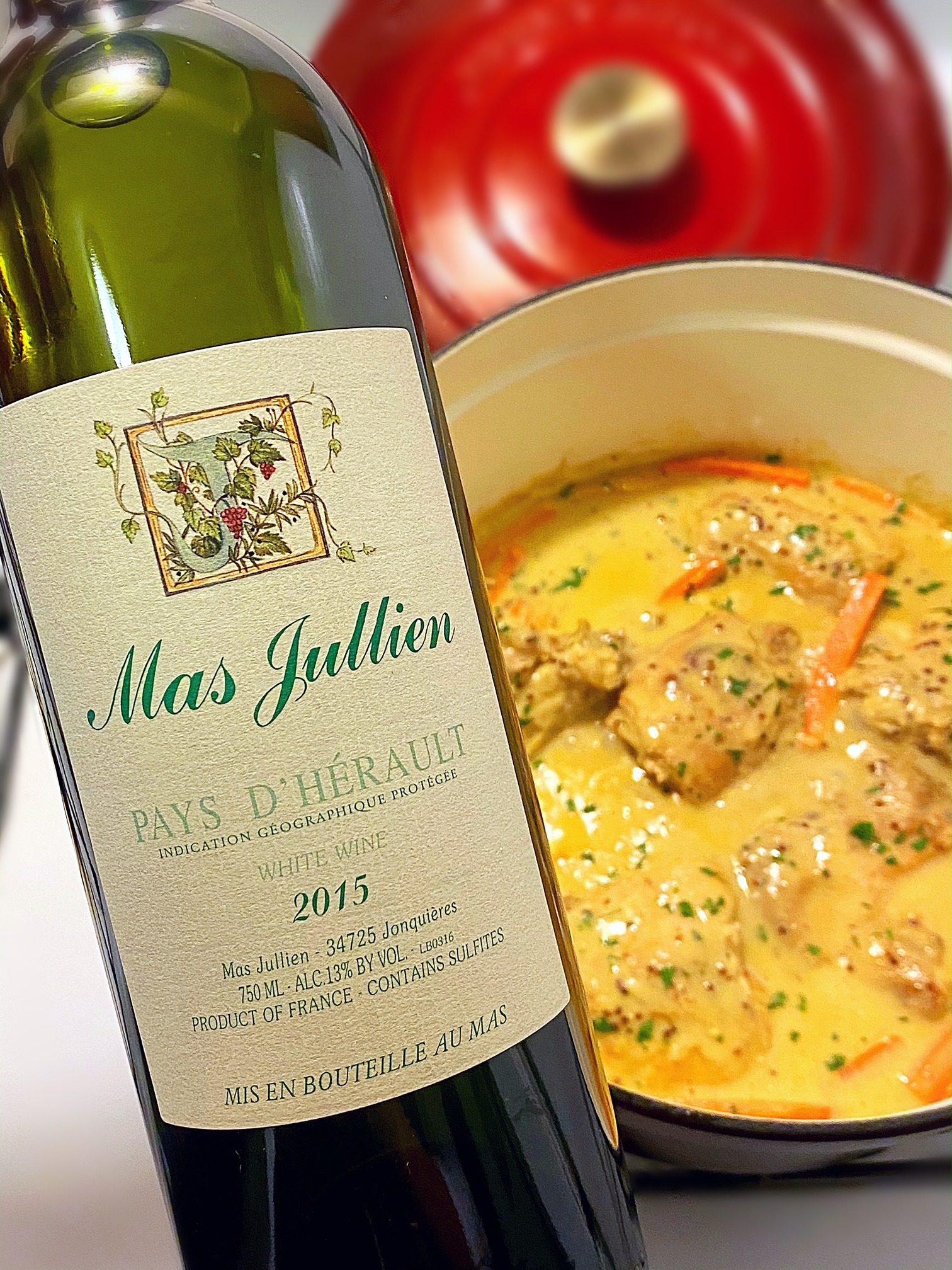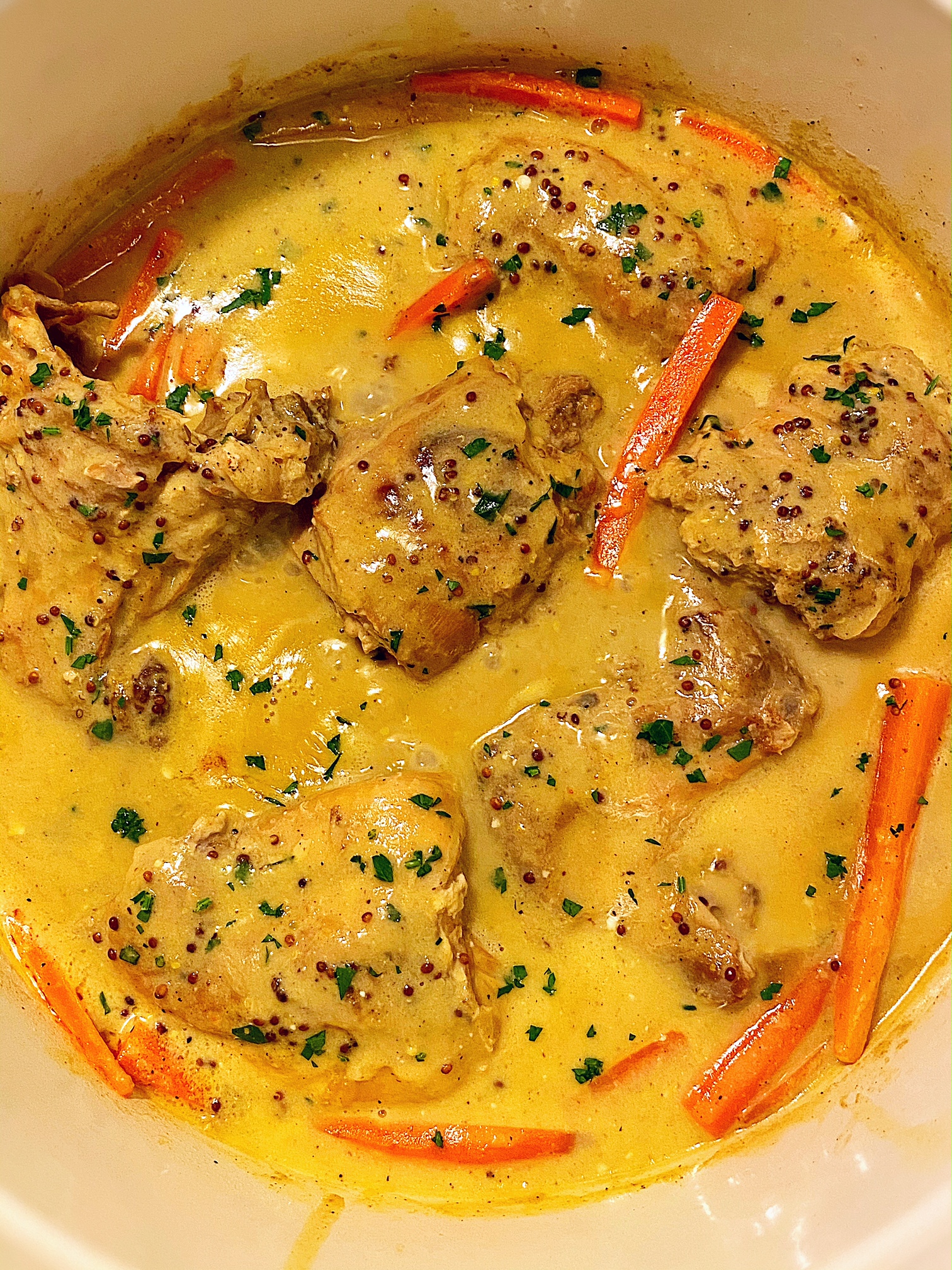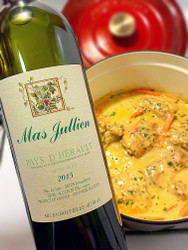Snowed In
Posted by Stephan Lublin on February 01 2021 1:40pm
It’s cold. It’s bitter. The frigid, biting wind whips down the streets as it cuts its way between the stoic buildings of New York, seemingly picking up speed as it moves along, while the snow falls at an ever increasing rate. As if we needed another reason to stay inside, aside from Covid, this is it. But it’s not all bad, as this icy, sub zero chill keeps us indoors, persuading us to cook the warm, stick-to-your-ribs meals I love. And few dishes warm the body and soul more than one of the all-time greatest bistro meals around, Lapin à la Moutarde, or Rabbit in Mustard Sauce.
For many here in the U.S., the mere mention of this furry, fluffy-tailed, floppy-eared little creature as dinner brings on an immediate cringe. But it shouldn’t, as rabbits are not only delicious and common to the table in other parts of the world, but are also much more sustainable to farm than the chickens, pigs, and cows we so easily consume without a second thought - and in the natural wine world, sustainability is often the key word.
Nutrition-wise, rabbits are high in protein and vitamins and low in fat. They require a small environment to live and a grain free diet, and provide six pounds of meat to a measly one pound of cattle on the same feed and water, making the carbon footprint of Thumper much smaller than that of Ol’ Bessie. But sustainability aside, these cotton-tailed cuties are downright tasty, especially when dusted in flour and seared in butter before being stewed in a savory broth of white wine, stock, aromatic vegetables, mustard (I prefer using both Dijon and whole-grain), salt, and pepper. Just before serving, the addition of crème fraîche to enrich the sauce brings the whole thing together. Garnish with chopped parsley and serve with rice or pasta.
For pairing, choosing a wine as sustainable as the rabbit itself is a necessity, and matching the rich, savory complexity of the dish along with the acidity and bite the mustard can bring can be a difficulty, but Mas Jullien’s Pays d'Hérault Blanc 2015 does so with effortless ease.
Scattered around the village of Jonquières in the Languedoc, Mas Jullien’s fifteen hectares of vines are planted on a diverse variety of soil types, expositions, and altitudes. The estate is relatively new, as winemaker Olivier Jullien began farming some of his family´s vineyard in 1985, following a degree in viticulture and oenology. He converted an old building to a cellar, began vinifying his grapes, and Mas Jullien was born.
Biodiversity and organic practices in the vineyard, paired with skilled winemaking and knowhow in the winery show through in the wines. For the cuvées of reds and rosé, a blend of Carignan, Mourvedre, Cinsault, Syrah, and Grenache are used in varying proportions. For the white, a majority of Carignan Blanc and remainder of Chenin blanc make up the assemblage, fermented separately and aged 12 months in neutral 600 liter demi-muids before its release.
The 2015 Pays d'Hérault Blanc shows fine citrus, white flowers, a gentle nuttyness, and savory minerality. On the palate, the voluminous texture, balanced acidity, and an unparalleled elegance demonstrate the work of a master. But these wines are not just for the immediate pleasure, as they will age gracefully for years to come.
In accompaniment of the Lapin à la Moutarde, the lush wine, velvety sauce nuanced with tangy Dijon, and tender, fall-off-the-bone rabbit come together in delicious harmony, giving you the perfect reason to stay inside during these snowy, polar nights, away from the outside world, in your warm, cozy den, safe and satiated. Cheers!



